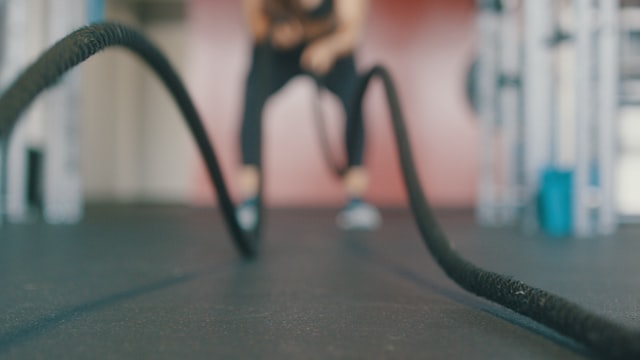LEARN
|
Strength and conditioning for youth athletes has been shown to have many positive benefits which include: improved gross motor skills and performance, injury prevention, reduced body fat, and increased muscle mass, psychosocial well-being, and bone mineral density. Most parents are not certified strength and conditioning specialists and tend to have many questions in regard to when is a strength and conditioning program safe to start for their child, how often should it be done, what type of exercises are appropriate, and should I hire a trained strength and conditioning specialist? This article will attempt to answer these normal questions that most parents and youth coaches may have.
Who is appropriate:
Who is not appropriate:
Fears There is no evidence that strength training stunts growth. Additionally, injuries to the growth plates can occur but this is usually due to improper technique and too much weight. When injury did occur to the growth plate it rarely affected growth. To prevent injury children should never attempt a one-repetition maximum. Stages and Progression The Long-Term Athletic Development Model (LTAD) and the National Academy of Sports Medicine (NASM) Optimum Performance Training (OPT) model are two sound pathways for youth strength and conditioning progression. The LTAD has useful information in regard realistic progressions specific to age and skill level to keep physical activity fun and safe, along with maximizing performance level as children age. There are three stages of the LTAD which we will go into more detail on for ages 6-14 years old. The NASM OPT model for young athletes progresses through three levels: stabilization, strength, and power training. This model also provides general guidelines for youth resistance training in regard to sets, reps, intensity, and recovery. Fundamental Stage (Males 6-9 and Females 6-8) Per the LTAD, in this stage children participate in less-structured activity with a focus on physical literacy and multiple sports that include running, jumping, and kicking that challenge balance, coordination, and speed. It is not necessary to have formal strength and conditioning training during this phase that is separate from multiple sport participation. Learn to Train Stage (Males 9-12 and Females 8-11) In this stage there is low to moderate structure and focus on technical competency. Again, multiple sports are strongly encouraged (three or more) and in this stage children can learn proper body weight training. These exercises would include push-ups, bodyweight squats, pull-ups, planks, lunges, and external resistance with medicine and stability balls or rubber tubing. Per the NASM OPT model this stage of training would start with foundational stabilization exercises with a dosage of 1-3 sets, 12-15 reps, at low intensity, with a recovery of 0-30 seconds between sets. Children can improve strength by 30-50% after 8 to 12 weeks at two times per week of a well designed strength training program. Click for Sample Training Routine Train to Train Stage (Males 12-16 and Females 11-15) This stage involves moderate structure with the focus on technical skills and the secondary focus on performance outcomes. Aerobic training becomes a little more important, but the focus is still on skill, speed, and strength. Periodization can be incorporated slowly with multiple phases and foci and focus may shift to only two sports. Once young athletes have demonstrated great exercise technique with bodyweight and stabilization training they may progress to strength resistance training and eventually power exercises.. Free weights, weight machines, rubber tubing, and medicine balls can be incorporated for a variety of resistance types. Each training session would consist of 6 to 8 exercises that train the major muscle groups with a balanced effort between flexors and extensors and between upper and lower body. Sample exercises could include dumbbell squat and lunges, seated tubing row, staggered stance tubing chest press, and seated dumbbell overhead press on bench. Per the NASM OPT model a dosage of 1-3 sets, 6-15 reps, at moderate intensity, with a recovery of 30-90 seconds between sets is recommended for strength training. The initial load selected for children would be 10 to 15 repetitions that can be completed with some fatigue but no muscle failure. In general, resistance can be increased by 5-10% when the child easily performs 15 repetitions. If the child fails to complete at least 6 repetitions per set or is unable to maintain proper form, then the weight is too heavy and should be reduced. Power exercises use explosive movements, so to progress to these exercises young athletes need to show great exercise technique and resistance training skill. Examples of power exercises include medicine ball soccer throw, medicine ball chest press, squat jumps, speed squat to overhead press, and eventually olympic lifts starting with just bar weight. The American Academy of Pediatrics recommends that children and adolescents avoid competitive Olympic-style weight lifting and power lifting until they reach physical and skeletal maturity. The snatch and clean and jerk are complex movements that require skilled coaching and such lifts should never be performed without proper training and supervision. Therefore, we recommend that during the later stages of strength training and onset of power training your child train under the supervision of a strength and conditioning specialist. Many experts have recommended that there should be an appropriate athlete-to-coach ratio of one coach per 10 youth athletes to minimize risk. The NASM OPT model also recommends 1-3 sets, 3-6 reps, at high intensity, with 1.5-3 minutes rest between sets for power training. Click for Sample Strength Training Routine Summary
Written by: Katie Larson, PT, SCS, CSCS
4 Comments
|
Archives
April 2024
Categories
All
|

 RSS Feed
RSS Feed